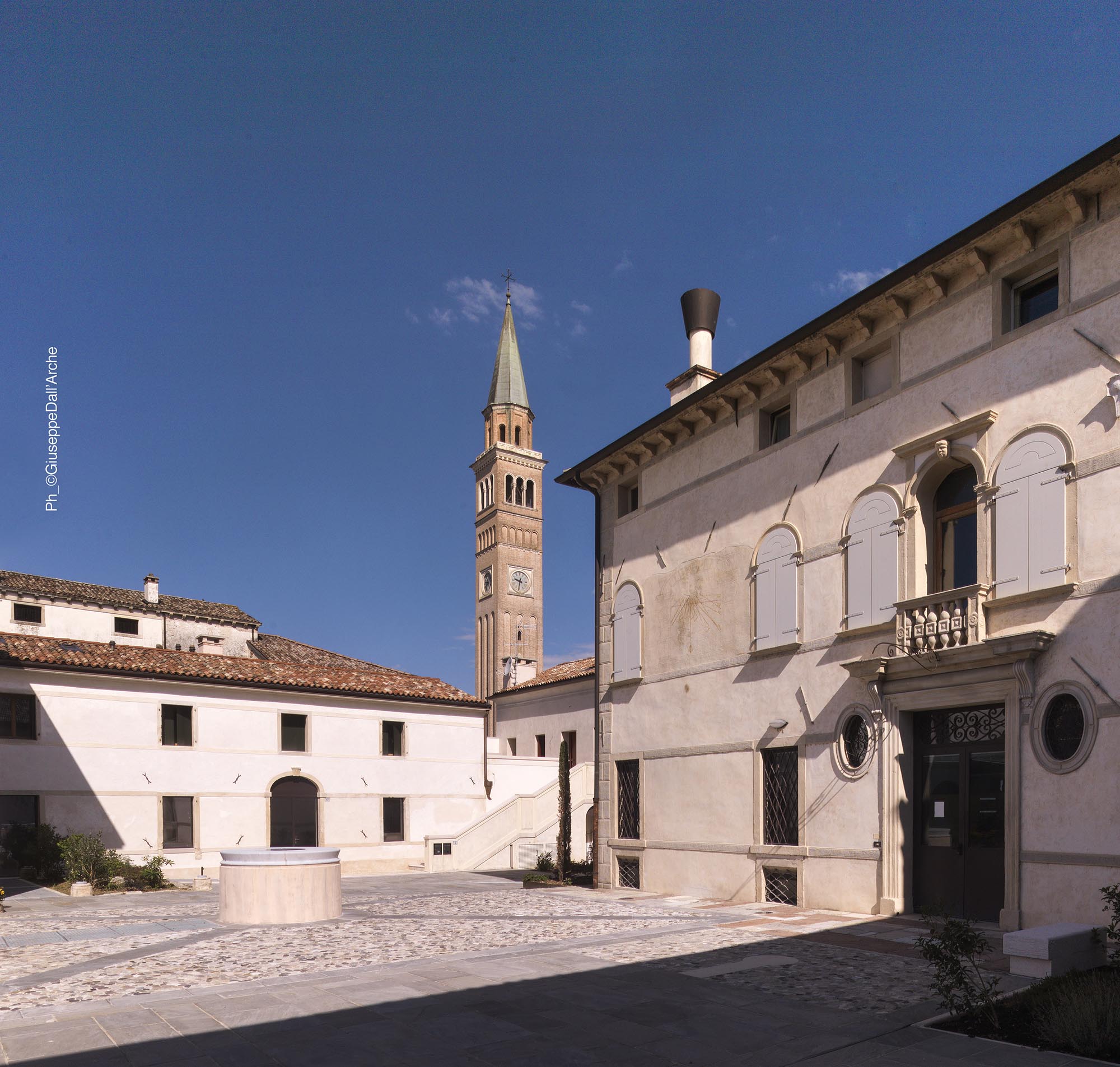Palazzo Morona e il Dazio della Muda
 Altro
Altro
Descrizione
Di fronte al Duomo e alla piazzetta antistante con fontana Umberto I° si trova Villa Morona. Si tratta di un complesso interessante vari edifici, ora divisi in più proprietà, con fronte su Via Marconi ed ingresso ad arco. L'edificio principale, di carattere seicentesco, reca sulla porta d'ingresso uno stemma in pietra del
casato dei Morona. Appartiene al complesso anche la chiesetta barocca con piccolo campanile a vela, dedicata alla Madonna del Carmine, originariamente
cappella gentilizia della famiglia. Faceva parte anticamente della proprietà Morona quella che poi venne chiamata villa Ghetti, che presenta una interessante facciata su Via Lubin, la strada di fronte all'attuale duomo.
Addossato a questo edificio, nella parte interna, vi è un altro fabbricato, con caratteristiche della tipica villa veneziana del tardo seicento.
In Via Lubin, sulla facciata dell'edificio che un tempo lo ospitava, è ancora visibile l'affresco (datato 1798) del Dazio della Muda. L'affresco indica
l'antica dogana, come si evince dalla scritta: " Qui si paga il dazio muda e traversa a norma della tarifa che esiste in mano al dazier...addì 26 febbraio 1798". La gestione della dogana era affidata all'omonima osteria, molto trafficata, soprattutto in epoca di intensi scambi. Frequenti erano le liti e baruffe che vi si svolgevano, delle quali erano protagonisti gli zattieri, provenienti da Falzè (sul fiume Piave), che in quel luogo si sostavano per le loro incombenze e per "un'ombra", prima di far ritorno nel Bellunese.
In front of the priest Church and the little square Umberto I with the fountain there is Villa Morona. It is an interesting complex of buildings, now divided in more properties, facing Via Marconi and arch entrance. The main building, of seventeenth-century character, has on its entrance door a stone emblem
of the Morona household. It belongs to the complex also the baroque little church with a tiny bell tower, dedicated to the Madonna del Carmine, originally noble chapel of the family. It was originally part of the Morona property the one that later would be called Villa Ghetti, which presents an interesting
façade on Via Lubin, the road on the front the current priest church.
Next to this building, in the internal part, there is another one, with characteristics of the typical Venetian villa of the late seventeen century. On Via Lubin, on the façade of the building that once hosted it, the fresco is still clear (dated 1798), of the ‘Dazio della Muda’. The fresco indicated the ancient customs,
as written: “Here you pay the duty and cross according to the current rate, dated February 26th 1798”. The customs’ dealing was of an ‘osteria’, very popular, most of all in times of intense trade. Frequent were the fights and disputes occurring there, of which were protagonists the ‘zattieri’, coming from Falzè (on the Piave river ), who in that place stopped for their tasks and for an ‘ombra’ (glass of wine), before going back to Belluno.
Vor dem Dom und dem kleinen Vorplatz mit dem Brunnen Umberto I. befindet sich die Villa Morona. Es handelt sich um einen interessanten Komplex aus verschiedenen Gebäuden, der verschiedenen Besitzern gehört, und dessen Fassade mit einem bogenförmigen Eingang auf Via Marconi blickt. Das Hauptgebäude aus dem siebzehnten Jahrhundert zeigt über der Eingangstür ein steinernes Wappen der Familie Morona. Zum Komplex gehört auch die Barockkapelle mit einem kleinen Glockengiebel, die der Madonna del Carmine geweiht ist und ursprünglich die Familienkapelle war. Zum Besitz Morona gehörte die spätere Villa Ghetti, die eine interessante Fassade an der Via Lubin, der Straße gegenüber dem heutigen Dom, zeigt.
Angrenzend an dieses Herrenhaus befindet sich im Innenbereich eine weitere Villa im typisch venezianischen Stil aus dem späten siebzehnten Jahrhundert.
In Via Lubin ist auf der Fassade des Gebäudes, das es einst schmückte, noch das Fresko aus dem Jahre 1798 von Dazio della Muda zu sehen. Das Gemälde stellt das alte Zollhaus dar, wie aus der Inschrift hervorgeht: „Hier zahlen wir den Zoll auf die Waren und für die Passage gemäß der Gebühr, die in den Händen des Zöllners liegt... am 26. Februar 1798“. Die Zollstelle war in dem gleichnamigen Gasthaus untergebracht, in dem vor allem zur Zeit der intensiven Handelstätigkeit sehr starker Verkehr herrschte. Häufig kam es zu Streitereien und Schlägereien, deren Hauptakteure die Flößer waren, die von Falzè (am Fluss Piave) kamen und dort anhielten, um ihre Besorgungen zu erledigen und einen „Ombra“, also ein Gläschen Wein, zu trinken, bevor sie in die Belluneser Gegend zurückkehrten.

